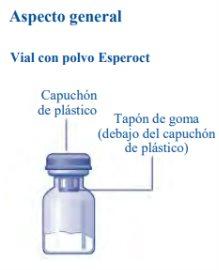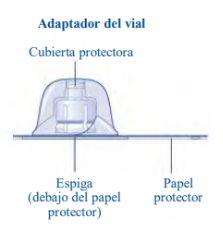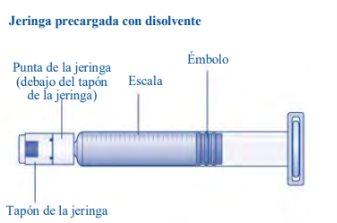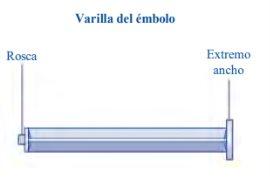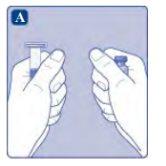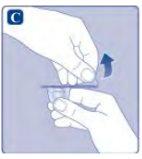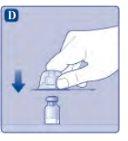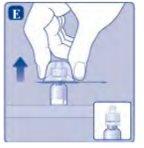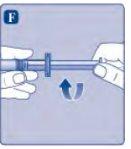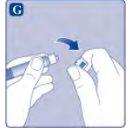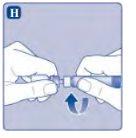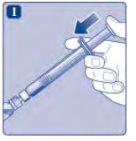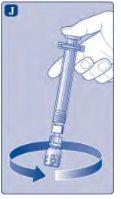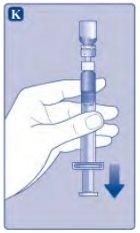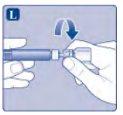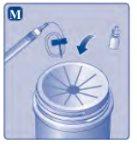
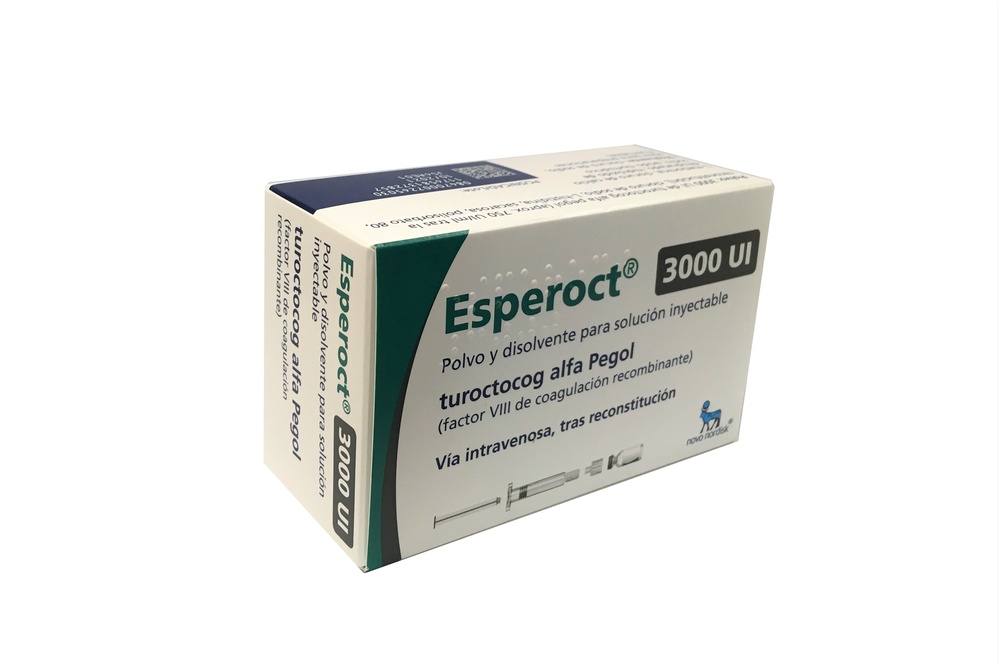
ЭСПЕРОКТ 3000 МЕ ПОРОШОК И РАСТВОРИТЕЛЬ ДЛЯ ПРИГОТОВЛЕНИЯ ИНЪЕКЦИОННОГО РАСТВОРА

Спросите врача о рецепте на ЭСПЕРОКТ 3000 МЕ ПОРОШОК И РАСТВОРИТЕЛЬ ДЛЯ ПРИГОТОВЛЕНИЯ ИНЪЕКЦИОННОГО РАСТВОРА

Инструкция по применению ЭСПЕРОКТ 3000 МЕ ПОРОШОК И РАСТВОРИТЕЛЬ ДЛЯ ПРИГОТОВЛЕНИЯ ИНЪЕКЦИОННОГО РАСТВОРА
Введение
Инструкция: информация для пользователя
Эсперокт 500МЕ единиц порошок и растворитель для инъекционного раствора
Эсперокт 1000МЕ единиц порошок и растворитель для инъекционного раствора
Эсперокт 1500МЕ единиц порошок и растворитель для инъекционного раствора
Эсперокт 2000МЕ единиц порошок и растворитель для инъекционного раствора
Эсперокт 3000МЕ единиц порошок и растворитель для инъекционного раствора
Эсперокт 4000МЕ единиц порошок и растворитель для инъекционного раствора
Эсперокт 5000МЕ единиц порошок и растворитель для инъекционного раствора
туроктоког альфа пегол [человеческий коагуляционный фактор VIII, модифицированный с помощью рекомбинантной ДНК (рДНК)]
Это лекарство подлежит дополнительному наблюдению, что позволит быстро обнаружить новую информацию о его безопасности. Вы можете внести свой вклад, сообщая о любых нежелательных реакциях, которые у вас могут возникнуть. В конце раздела 4 содержится информация о том, как сообщать о этих нежелательных реакциях.
Прочитайте внимательно всю инструкцию перед началом использования этого лекарства, поскольку она содержит важную информацию для вас.
- Сохраните эту инструкцию, поскольку вам может потребоваться прочитать ее снова.
- Если у вас есть какие-либо вопросы, проконсультируйтесь с вашим врачом.
- Это лекарство было назначено только вам, и не передавайте его другим людям, даже если у них такие же симптомы, как у вас, поскольку оно может нанести им вред.
- Если вы испытываете нежелательные реакции, проконсультируйтесь с вашим врачом, даже если они не указаны в этой инструкции. См. раздел 4.
Содержание инструкции
- Что такое Эсперокт и для чего он используется
- Что нужно знать перед началом использования Эсперокта
- Как использовать Эсперокт
- Возможные нежелательные реакции
- Хранение Эсперокта
- Содержание упаковки и дополнительная информация
1. Что такое Эсперокт и для чего он используется
Что такое Эсперокт
Эсперокт содержит активное вещество тuroктоког альфа пегол и является лекарством длительного действия, содержащим рекомбинантный коагуляционный фактор VIII. Коагуляционный фактор VIII - это белок, который находится в крови и помогает предотвратить и остановить кровотечение.
Для чего используется Эсперокт
Эсперокт используется для лечения и профилактики кровотечений у людей всех возрастных групп с гемофилией А (врожденным дефицитом коагуляционного фактора VIII).
У людей с гемофилией А коагуляционный фактор VIII отсутствует или не функционирует правильно. Эсперокт заменяет этот отсутствующий или дефектный коагуляционный фактор VIII и помогает крови образовывать сгустки в месте кровотечения.
2. Что нужно знать перед началом использования Эсперокта
Не используйте Эсперокт
- если вы аллергичны к тuroктокогу альфа пеголу или к любому другому компоненту этого лекарства (перечисленному в разделе 6)
- если вы аллергичны к белкам хомяка.
Не используйте Эсперокт, если вы находитесь в одной из вышеуказанных ситуаций. Если вы не уверены, проконсультируйтесь с вашим врачом перед использованием этого лекарства.
Предостережения и меры предосторожности
Предыдущее использование лекарств, содержащих коагуляционный фактор VIII
Сообщите вашему врачу, если вы ранее использовали лекарства, содержащие коагуляционный фактор VIII, особенно если вы развили ингибиторы (антитела) к лекарству, поскольку может быть риск того, что это произойдет снова.
Аллергические реакции
Существует риск того, что может произойти тяжелая и внезапная аллергическая реакция (например, анафилактическая реакция) на Эсперокт.
Если вы испытываете ранние признаки аллергических реакций, прекратите введение и немедленно свяжитесь с вашим врачом или службой экстренной помощи. Эти ранние признаки могут быть сыпью, крапивницей, зудом в обширных участках кожи, покраснением и/или отеком губ, языка, лица или рук, затруднением глотания или дыхания, свистом, чувством сдавления в груди, бледной и холодной кожей, сердцебиением или головокружением, головной болью, тошнотой и рвотой.
Развитие "ингибиторов коагуляционного фактора VIII" (антител)
Могут развиваться ингибиторы (антитела) во время лечения всеми лекарствами, содержащими коагуляционный фактор VIII
- Эти ингибиторы, особенно при высоких уровнях, препятствуют правильному функционированию лечения
- Вас будут внимательно наблюдать на предмет развития ингибиторов
- Если ваше кровотечение не контролируется Эспероктом, немедленно сообщите вашему врачу
- Не увеличивайте общую дозу Эсперокта для контроля кровотечения без консультации с вашим врачом.
Осложнения, связанные с катетером
Если у вас есть катетер, через который вводятся лекарства в кровь (устройство центрального венозного доступа), вы можете развить инфекции или тромбы крови в месте введения катетера.
Заболевания сердца
Обсудите с вашим врачом или фармацевтом, если у вас есть заболевание сердца или если вы рискуете заболеванием сердца.
Другие лекарства и Эсперокт
Сообщите вашему врачу, если вы используете, недавно использовали или можете использовать любое другое лекарство.
Беременность и лактация
Если вы беременны или кормите грудью, предполагаете, что можете быть беременной или планируете стать беременной, проконсультируйтесь с вашим врачом перед использованием этого лекарства.
Вождение и использование машин
Влияние Эсперокта на способность управлять транспортными средствами и работать с механизмами отсутствует.
Снижение активности коагуляционного фактора VIII у ранее не леченных пациентов
Может произойти снижение активности коагуляционного фактора VIII в начале лечения. Если ваше кровотечение не контролируется Эспероктом, сообщите вашему врачу.
Снижение активности коагуляционного фактора VIII у ранее леченных пациентов
Может произойти снижение активности коагуляционного фактора VIII в начале лечения. Сообщите вашему врачу, если ваша обычная доза Эсперокта не контролирует ваше кровотечение.
Эсперокт содержит натрий
Это лекарство содержит 30,5 мг натрия (основного компонента поваренной соли) на один восстановленный флакон. Это эквивалентно 1,5% от максимально допустимой суточной нормы потребления натрия для взрослого.
3. Как использовать Эсперокт
Лечение Эспероктом будет начато врачом с опытом лечения пациентов с гемофилией А.
Следуйте точно инструкциям по введению этого лекарства, указанным вашим врачом. Если у вас есть сомнения в использовании Эсперокта, проконсультируйтесь с вашим врачом.
Как вводится Эсперокт
Эсперокт вводится путем инъекции в вену (внутривенно), см. "Инструкции по использованию Эсперокта" для получения дополнительной информации.
Какая доза используется
Ваш врач рассчитает вашу дозу на основе вашего веса и того, используется ли Эсперокт для профилактики или лечения кровотечения.
Для профилактики кровотечений
Для детей (младше 12 лет) рекомендуемая доза составляет 65 МЕ Эсперокта на килограмм веса дважды в неделю. Ваш врач может выбрать другую дозу или частоту введения инъекций в зависимости от ваших потребностей.
Для взрослых и подростков (12 лет и старше) рекомендуемая доза составляет 50 МЕ Эсперокта на килограмм веса каждые 4 дня. Ваш врач может выбрать другую дозу или частоту введения инъекций в зависимости от ваших потребностей.
Для лечения кровотечений
Доза Эсперокта рассчитывается на основе вашего веса и желаемого уровня коагуляционного фактора VIII. Желаемый уровень коагуляционного фактора VIII зависит от тяжести и местоположения кровотечения. Сообщите вашему врачу, если ваша обычная доза Эсперокта не контролирует ваше кровотечение.
Использование у детей и подростков
Для детей (младше 12 лет) рекомендуемая доза составляет 65 МЕ Эсперокта на килограмм веса дважды в неделю. Подростки (12 лет и старше) могут использовать такую же дозу, как и взрослые.
Если вы использовали больше Эсперокта, чем следует
Если вы использовали больше Эсперокта, чем следует, немедленно свяжитесь с вашим врачом.
Всегда используйте Эсперокт точно так, как указал ваш врач. Если вы не уверены, проконсультируйтесь с вашим врачом. Для дополнительной информации см. "Развитие ингибиторов коагуляционного фактора VIII (антител)" в разделе 2.
Если вы пропустили использование Эсперокта
Если вы пропустили дозу, введите пропущенную дозу как можно скорее. Не вводите двойную дозу, чтобы компенсировать пропущенную дозу. Продолжайте с следующей инъекцией, как было запланировано, и следуйте советам вашего врача. Если у вас есть сомнения, проконсультируйтесь с вашим врачом.
Если вы прекратили лечение Эспероктом
Не прекращайте лечение Эспероктом без предварительной консультации с вашим врачом.
Если вы прекратите лечение Эспероктом, вы перестанете быть защищенным от кровотечения или возможно, что существующее кровотечение не остановится. Если у вас есть какие-либо другие вопросы о использовании этого лекарства, проконсультируйтесь с вашим врачом.
4. Возможные нежелательные реакции
Как и все лекарства, это лекарство может вызывать нежелательные реакции, хотя не все люди испытывают их.
Аллергические реакции (гиперчувствительность)
Немедленно прекратите введение, если вы испытываете тяжелые и внезапные аллергические реакции (анафилактические реакции). Если вы испытываете любой из следующих симптомов аллергической реакции, немедленно свяжитесь с вашим врачом или службой экстренной помощи:
- затруднение глотания или дыхания
- свист
- чувство сдавления в груди
- покраснение и/или отек губ, языка, лица или рук
- сыпь, крапивница, зуд
- бледная и холодная кожа, сердцебиение или головокружение (низкое кровяное давление)
- головная боль, тошнота или рвота.
Развитие "ингибиторов коагуляционного фактора VIII" (антител)
Если вы ранее получали более 150 дней лечения коагуляционным фактором VIII, вы можете развить ингибиторы (антитела) (это может произойти у до 1 из 100 человек). Если это произойдет, лечение может перестать действовать правильно, и вы можете испытать постоянное кровотечение. Если это произойдет, немедленно свяжитесь с вашим врачом. См. "Развитие ингибиторов коагуляционного фактора VIII (антител)" в разделе 2.
Наблюдаемые нежелательные реакции Эсперокта
Очень частые нежелательные реакции(могут возникнуть у более 1 из 10 человек)
- ингибиторы коагуляционного фактора VIII (антитела) у пациентов, не леченных ранее коагуляционным фактором VIII.
Частые нежелательные реакции(могут возникнуть у до 1 из 10 человек)
- реакции на коже в месте инъекции
- зуд (прурит)
- покраснение кожи (эритема)
- крапивница.
Редкие нежелательные реакции(могут возникнуть у до 1 из 100 человек)
- аллергические реакции (гиперчувствительность). Они могут быть тяжелыми и угрожающими жизни, см. предыдущий раздел "Аллергические реакции (гиперчувствительность)" для дополнительной информации
- ингибиторы коагуляционного фактора VIII (антитела) у пациентов, леченных ранее коагуляционным фактором VIII.
Другие возможные нежелательные реакции(частота неизвестна)
Снижение активности коагуляционного фактора VIII в отсутствие ингибиторов коагуляционного фактора VIII.
Может произойти временная реакция иммунной системы в начале лечения, что может уменьшить эффективность лекарства.
Сообщение о нежелательных реакциях
Если вы испытываете любую нежелательную реакцию, проконсультируйтесь с вашим врачом, фармацевтом или медсестрой, даже если это возможные нежелательные реакции, не указанные в этой инструкции. Вы также можете сообщить о них напрямую через национальную систему уведомления, указанную в Приложении V. Сообщая о нежелательных реакциях, вы можете внести свой вклад в предоставление более полной информации о безопасности этого лекарства.
5. Хранение Эсперокта
Храните это лекарство в недоступном для детей месте.
Не используйте это лекарство после истечения срока годности, указанного на упаковке и этикетках флакона и предварительно заполненной шприца после "СГ". Срок годности - последний день месяца, указанного.
До восстановления(до смешивания порошка с растворителем):
Храните в холодильнике (при температуре между 2°C и 8°C). Эсперокт можно хранить
- при комнатной температуре (≤ 30°C) в течение единого периода, не превышающего 1 год в течение срока годности лекарства или
- при температуре выше комнатной (> 30°C до 40°C) в течение единого периода, не превышающего 3 месяцев в течение срока годности лекарства.
Когда вы начинаете хранить Эсперокт вне холодильника, укажите дату и температуру хранения в месте, указанном на картонной упаковке.
Как только вы вынули лекарство из холодильника для хранения, его нельзя снова помещать в холодильник. Не замораживайте. Храните в оригинальной упаковке, чтобы защитить от света.
После восстановления(после смешивания порошка с растворителем - 500 МЕ, 1000 МЕ, 1500 МЕ, 2000 МЕ, 3000 МЕ):
Как только Эсперокт восстановлен, его следует использовать немедленно. Если вы не можете использовать восстановленный раствор сразу, его следует использовать в
- 24 часа, когда он хранится в холодильнике (при температуре между 2°C и 8°C) или
- 4 часа при температуре ≤ 30°C или
- 1 час при температуре > 30°C и 40°C, только если продукт хранился до восстановления при температуре выше комнатной (> 30°C до 40°C) не более 3 месяцев.
После восстановления(после смешивания порошка с растворителем - 4000 МЕ, 5000 МЕ):
Была продемонстрирована химическая и физическая стабильность при использовании для:
- 24 часа, когда он хранится в холодильнике (при температуре между 2°C и 8°C) или
- 4 часа при температуре ≤ 30°C.
Порошок в флаконе представляет собой белый или слегка белый порошок. Если цвет порошка изменился, не используйте его.
Восстановленный раствор должен быть прозрачным и бесцветным. Не используйте восстановленный раствор, если вы заметили в нем частицы или изменение цвета.
Лекарства не следует выбрасывать в канализацию или мусор. Спросите вашего фармацевта, как утилизировать упаковку и лекарства, которые вам больше не нужны. Таким образом, вы поможете защитить окружающую среду.
6. Содержимое упаковки и дополнительная информация
Состав Эсперокта
- Активное вещество — туоктоког альфа пегол [человеческий фактор свёртывания VIII пегилированный (ADNr)]. Каждый флакон Эсперокта содержит 500, 1000, 1500, 2000, 3000, 4000 или 5000 МЕ туоктокога альфа пегола.
- Другие компоненты — Л-гистидин, сахароза, полисорбат 80, хлорид натрия, Л-метионин, дигидрат хлорида кальция, гидроксид натрия и соляная кислота.
- Компоненты растворителя — раствор для инъекций хлорида натрия 9 мг/мл (0,9%) и вода для инъекций.
См. раздел 2 «Эсперокт содержит натрий».
После реconstitution с растворителем, поставляемым в комплекте [раствор для инъекций хлорида натрия 9 мг/мл (0,9%)], приготовленный раствор для инъекций содержит 125, 250, 375, 500, 750, 1000 или 1250 МЕ туоктокога альфа пегола на мл, соответственно (на основе концентрации туоктокога альфа пегола, т.е. 500, 1000, 1500, 2000, 3000, 4000 или 5000 МЕ).
Внешний вид Эсперокта и содержимое упаковки
Эсперокт выпускается в упаковках, содержащих 500 МЕ, 1000 МЕ, 1500 МЕ, 2000 МЕ, 3000 МЕ, 4000 МЕ или 5000 МЕ. Каждая упаковка Эсперокта содержит флакон с белым или слегка белым порошком, предварительно заполненную шприц с 4 мл бесцветного и прозрачного растворителя, шток плунжера и адаптер для флакона.
Владелец разрешения на маркетинг и производитель
Novo Nordisk A/S
Novo Allé
DK-2880 Bagsværd, Дания
Дата последнего пересмотра этой инструкции:
Другие источники информации
Подробная информация о этом лекарственном средстве доступна на сайте Европейского агентства по лекарственным средствам: http://www.ema.europa.eu.
Инструкции по применению Эсперокта Внимательно прочитайте эти инструкции перед использованием Эсперокта. Эсперокт поставляется в виде порошка. Перед инъекцией его необходимо реconstituir с растворителем, поставляемым в комплекте. Растворитель представляет собой раствор для инъекций хлорида натрия 9 мг/мл (0,9%). Полученный раствор для инъекций необходимо вводить в вену [внутривенная инъекция (IV)]. Элементы этой упаковки предназначены для реconstitution и введения Эсперокта. Вам также понадобится:
Эти элементы не входят в состав упаковки Эсперокта. Не используйте оборудование без надлежащей подготовки от вашего врача или медсестры. Всегда мойте руки и убедитесь, что окружающая область чистая. При приготовлении и введении препарата непосредственно в вену важно использовать чистую и асептическую технику.Неправильная техника может привести к введению бактерий, способных вызвать инфекцию крови. Не открывайте оборудование до тех пор, пока не будете готовы к его использованию. Не используйте оборудование, если оно было уронено или повреждено.Вместо этого используйте новую упаковку. Не используйте оборудование, если оно просрочено.Вместо этого используйте новую упаковку. Дата истечения срока годности напечатана на внешней упаковке, флаконе, адаптере для флакона и предварительно заполненном шприце. Не используйте оборудование, если вы подозреваете, что оно загрязнено.Вместо этого используйте новую упаковку. Не выбрасывайте никакие элементы до тех пор, пока не будет введен реconstituirанный раствор. Оборудование предназначено для одноразового использования. | |
Содержимое Упаковка содержит:
| |
| |
Не используйте никакие другие системы для нагревафлакона и предварительно заполненного шприца. |
|
|
|
Если защитная бумага не полностью запечатана или если она повреждена, не используйте адаптер для флакона. Не вынимайте адаптер для флакона из защитной крышки пальцами. Если вы прикоснетесь к штифту адаптера для флакона, вы можете передать бактерии с ваших пальцев. |
|
После соединения не снимайте адаптер для флакона с флакона. |
|
Не снимайте адаптер для флаконапри снятии защитной крышки. |
|
|
|
Не прикасайтесь к наконечнику шприцапод пробкой шприца. Если вы прикоснетесь к наконечнику шприца, вы можете передать бактерии с ваших пальцев. Если пробка шприца ослаблена или отсутствует, не используйте предварительно заполненный шприц. |
|
|
|
|
|
Не встряхивайте флакон,поскольку это может привести к образованию пены.
|
|
Рекомендуется использовать Эсперокт сразу после реconstitution. Если вы не можете использовать раствор Эсперокта сразу после реconstitution (относится к 500 МЕ, 1000 МЕ, 1500 МЕ, 2000 МЕ, 3000 МЕ),вы должны использовать его в течение:
Если вы не можете использовать раствор Эсперокта сразу после реconstitution (относится к 4000 МЕ, 5000 МЕ),вы должны использовать его в течение:
Храните реconstituirанный препарат в флаконе. Не замораживайте реconstituirанный раствор и не храните его в шприцах. Храните реconstituirанный растворподальше от прямого света. Если ваша доза требует более одного флакона, повторите шаги Адо Йс дополнительными флаконами, адаптерами для флаконов и предварительно заполненными шприцами до достижения необходимой дозы. | |
Если в шприце есть воздух, введите его обратно в флакон.
|
|
Не прикасайтесь к наконечнику шприца.Если вы прикоснетесь к наконечнику шприца, вы можете передать бактерии с ваших пальцев. |
|
Теперь Эсперокт готов к введению в вену.
Не смешивайте Эсперокт с другими инъекциями или внутривенными препаратами. Введение Эсперокта через безигольные соединители для внутривенных катетеров (IV) Осторожность:Предварительно заполненный шприц сделан из стекла и предназначен для совместимости со стандартными соединениями Luer-lock. Некоторые безигольные соединители с внутренней штифтом несовместимы с предварительно заполненным шприцем. Эта несовместимость может предотвратить введение препарата и повредить безигольный соединитель. Введение раствора через устройство доступа к вене (DAVC), такое как центральный венозный катетер или субкутанный порт:
| |
Утилизация
Не выбрасывайте их в домашний мусор. |
|
Не разбирайте оборудование перед его утилизацией. Не повторно используйте оборудование. |
- Страна регистрации
- Активное вещество
- Требуется рецептДа
- Производитель
- Информация носит справочный характер и не является медицинской рекомендацией. Перед приемом любых препаратов проконсультируйтесь с врачом. Oladoctor не несет ответственности за медицинские решения, принятые на основе этого контента.
- Аналоги ЭСПЕРОКТ 3000 МЕ ПОРОШОК И РАСТВОРИТЕЛЬ ДЛЯ ПРИГОТОВЛЕНИЯ ИНЪЕКЦИОННОГО РАСТВОРАФорма выпуска: ИНЪЕКЦИОННЫЙ РАСТВОР, 1000 МЕАктивное вещество: фактор свертывания крови VIIIПроизводитель: Takeda Manufacturing Austria AgТребуется рецептФорма выпуска: ИНЪЕКЦИОННЫЙ РАСТВОР, 1500 МЕАктивное вещество: фактор свертывания крови VIIIПроизводитель: Takeda Manufacturing Austria AgТребуется рецептФорма выпуска: ИНЪЕКЦИОННЫЙ РАСТВОР, 1000 МЕ - после восстановления в 2 мл воды для инъекций доза составляет 500 МЕ/млАктивное вещество: фактор свертывания крови VIIIПроизводитель: Takeda Manufacturing Austria AgТребуется рецепт
Аналоги ЭСПЕРОКТ 3000 МЕ ПОРОШОК И РАСТВОРИТЕЛЬ ДЛЯ ПРИГОТОВЛЕНИЯ ИНЪЕКЦИОННОГО РАСТВОРА в других странах
Лучшие аналоги с тем же действующим веществом и терапевтическим эффектом.
Аналог ЭСПЕРОКТ 3000 МЕ ПОРОШОК И РАСТВОРИТЕЛЬ ДЛЯ ПРИГОТОВЛЕНИЯ ИНЪЕКЦИОННОГО РАСТВОРА в Польша
Аналог ЭСПЕРОКТ 3000 МЕ ПОРОШОК И РАСТВОРИТЕЛЬ ДЛЯ ПРИГОТОВЛЕНИЯ ИНЪЕКЦИОННОГО РАСТВОРА в Украина
Врачи онлайн по ЭСПЕРОКТ 3000 МЕ ПОРОШОК И РАСТВОРИТЕЛЬ ДЛЯ ПРИГОТОВЛЕНИЯ ИНЪЕКЦИОННОГО РАСТВОРА
Консультация по дозировке, побочным эффектам, взаимодействиям, противопоказаниям и продлению рецепта на ЭСПЕРОКТ 3000 МЕ ПОРОШОК И РАСТВОРИТЕЛЬ ДЛЯ ПРИГОТОВЛЕНИЯ ИНЪЕКЦИОННОГО РАСТВОРА – по решению врача и с учетом местных правил.




